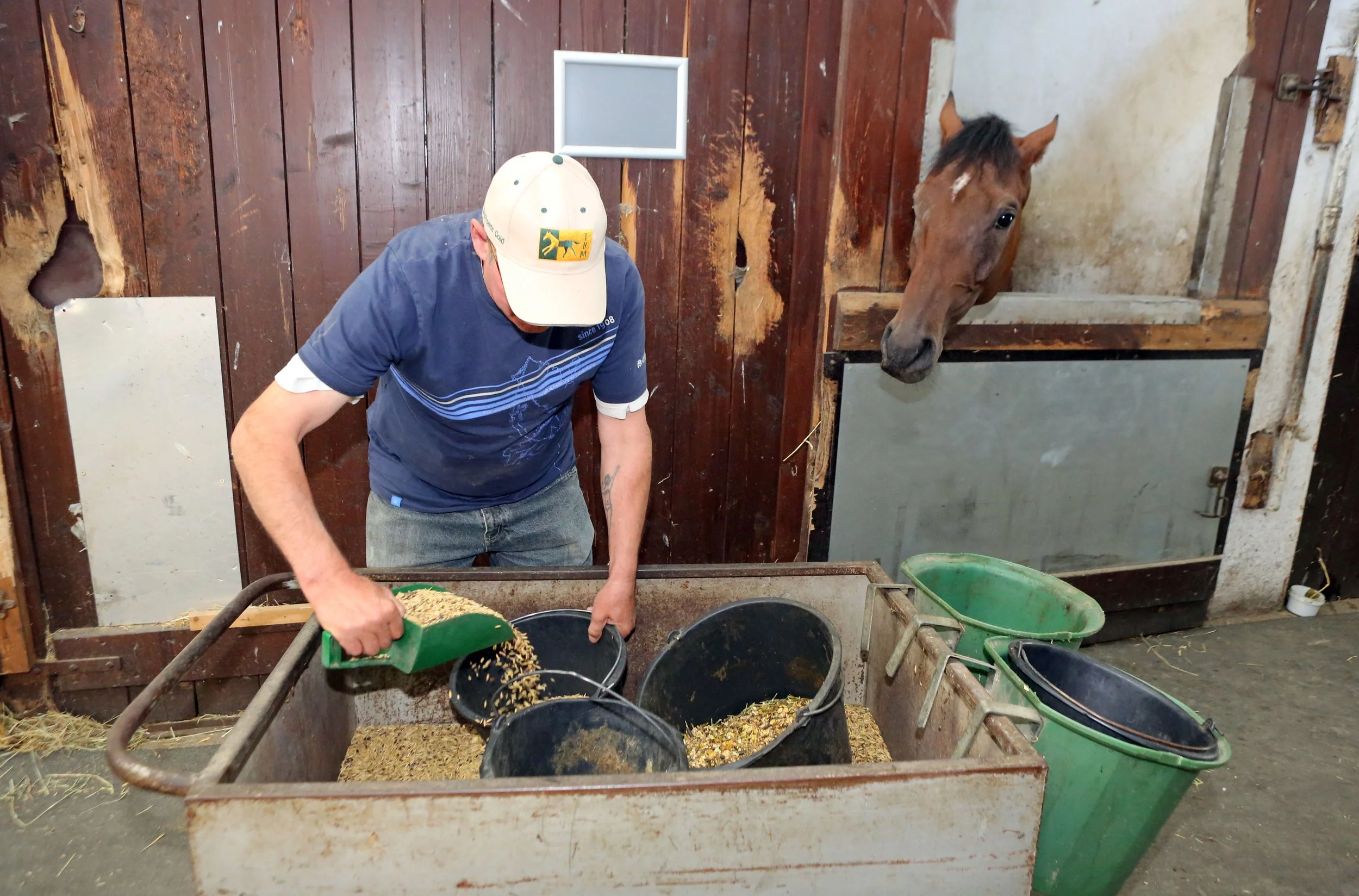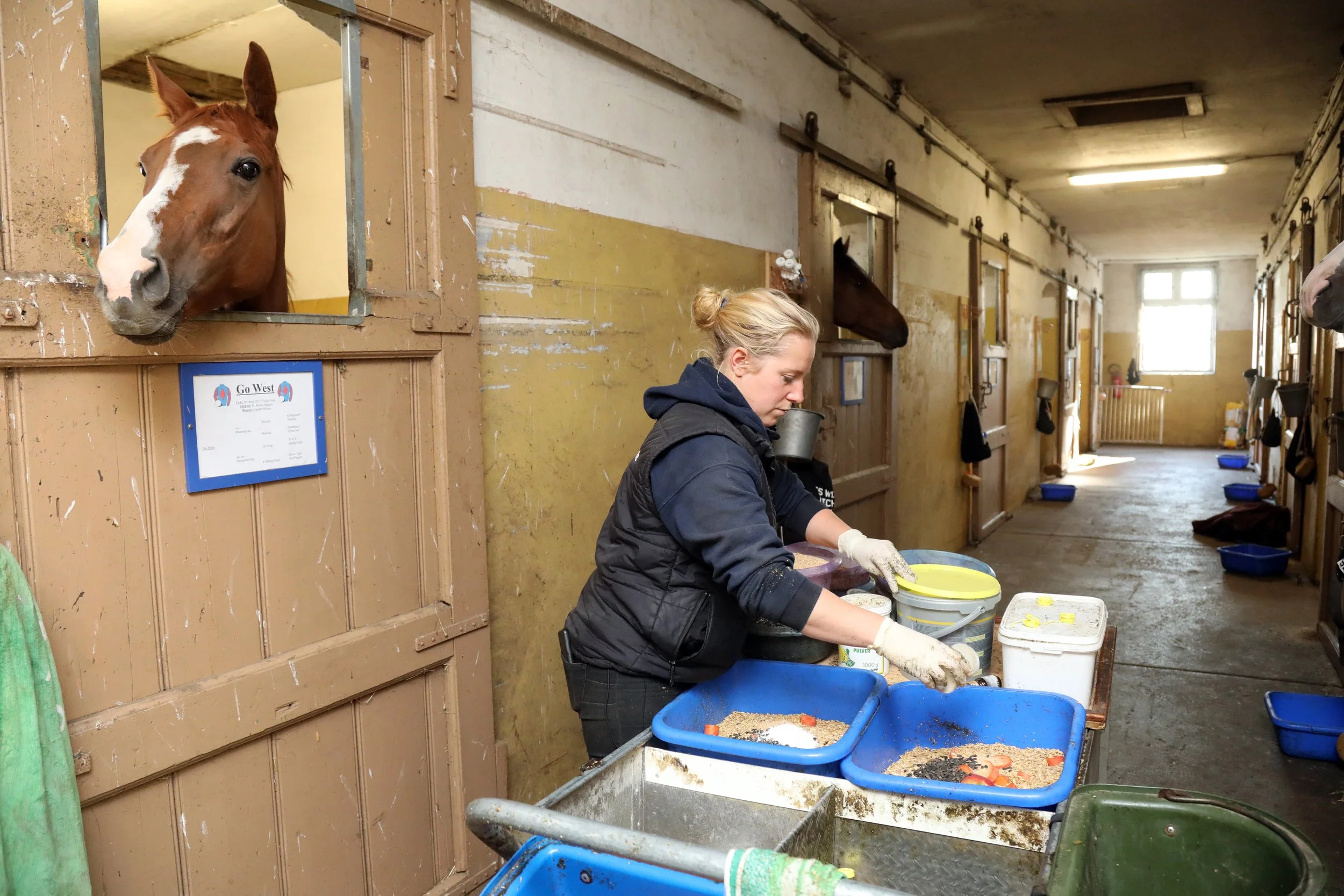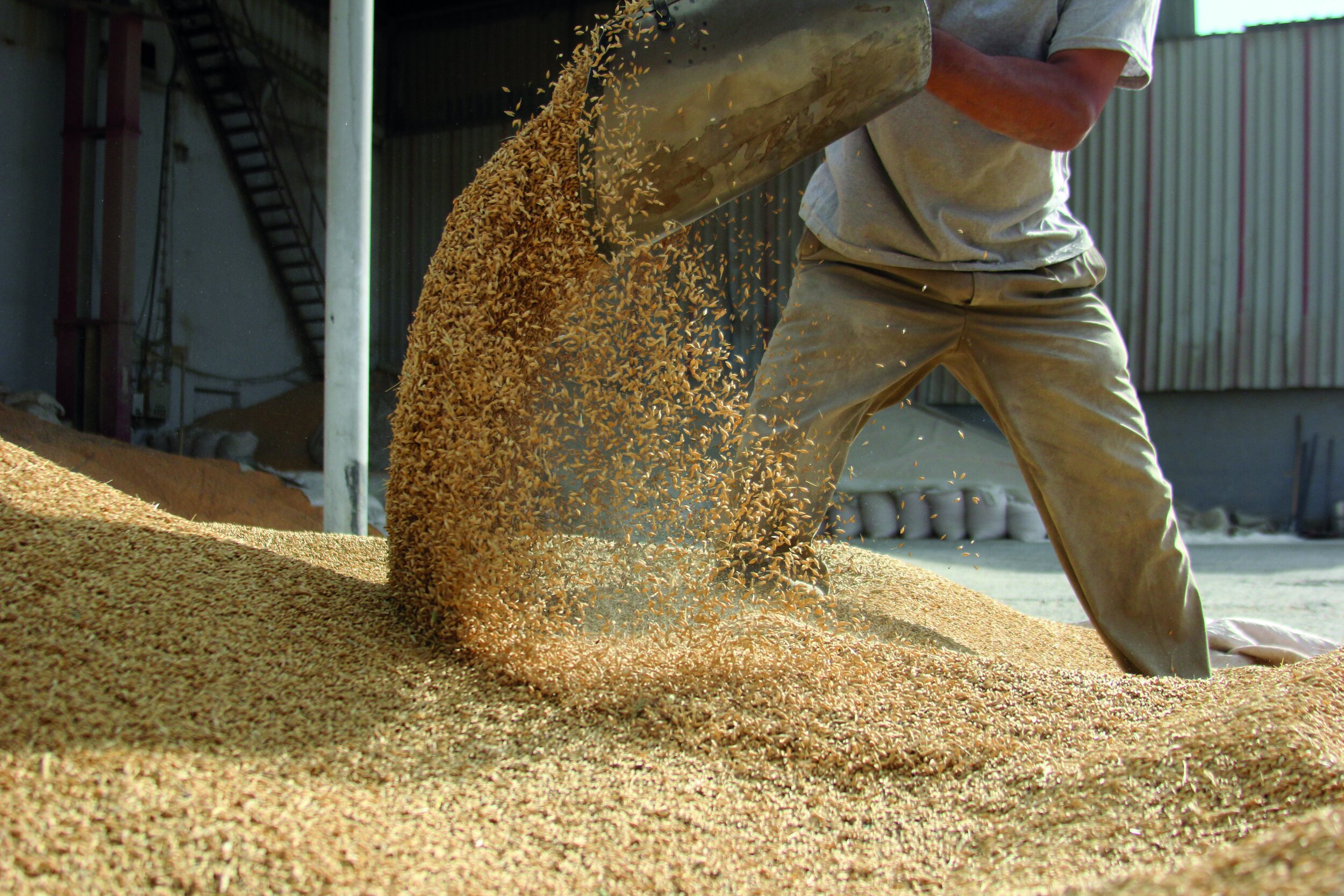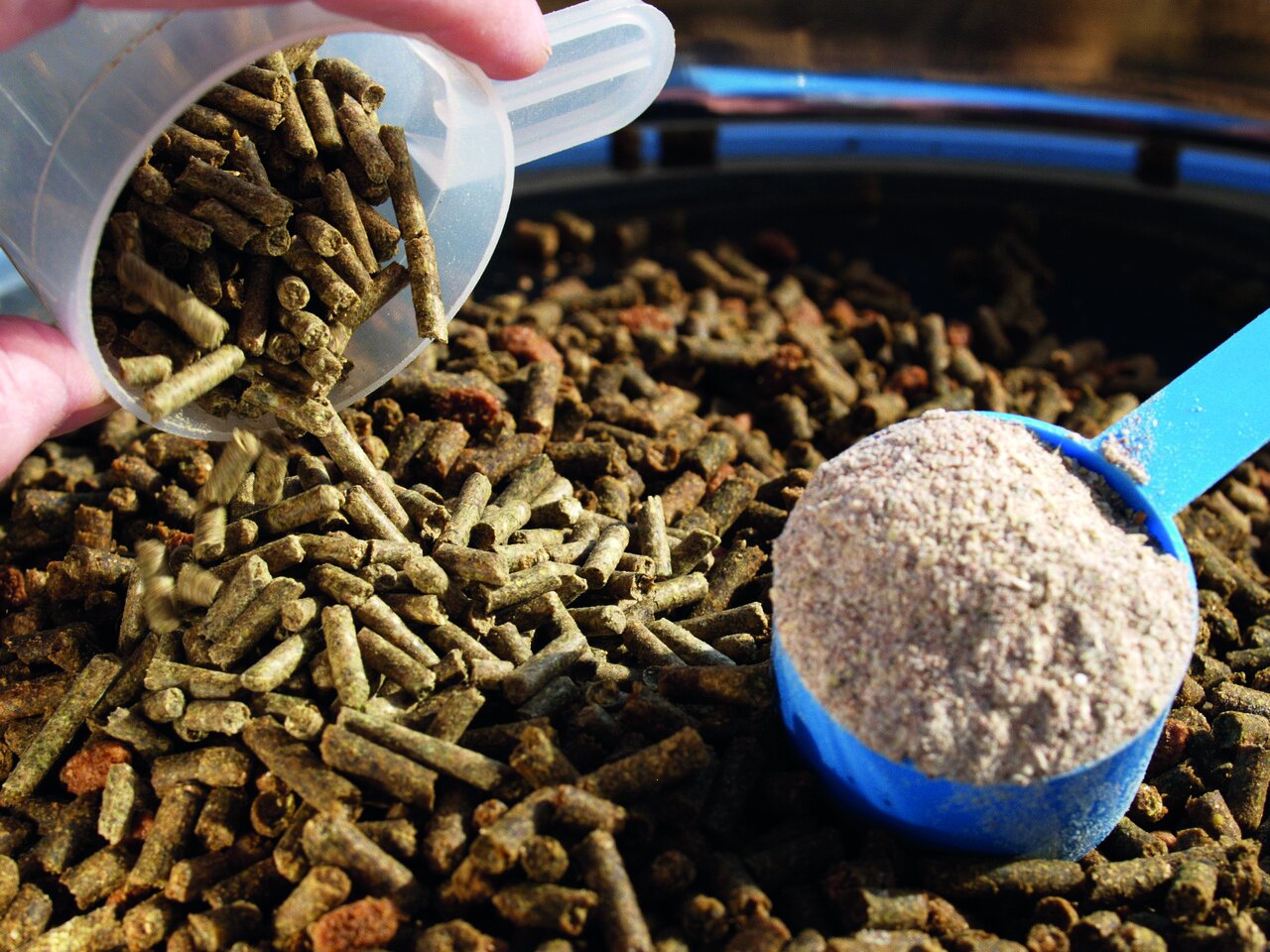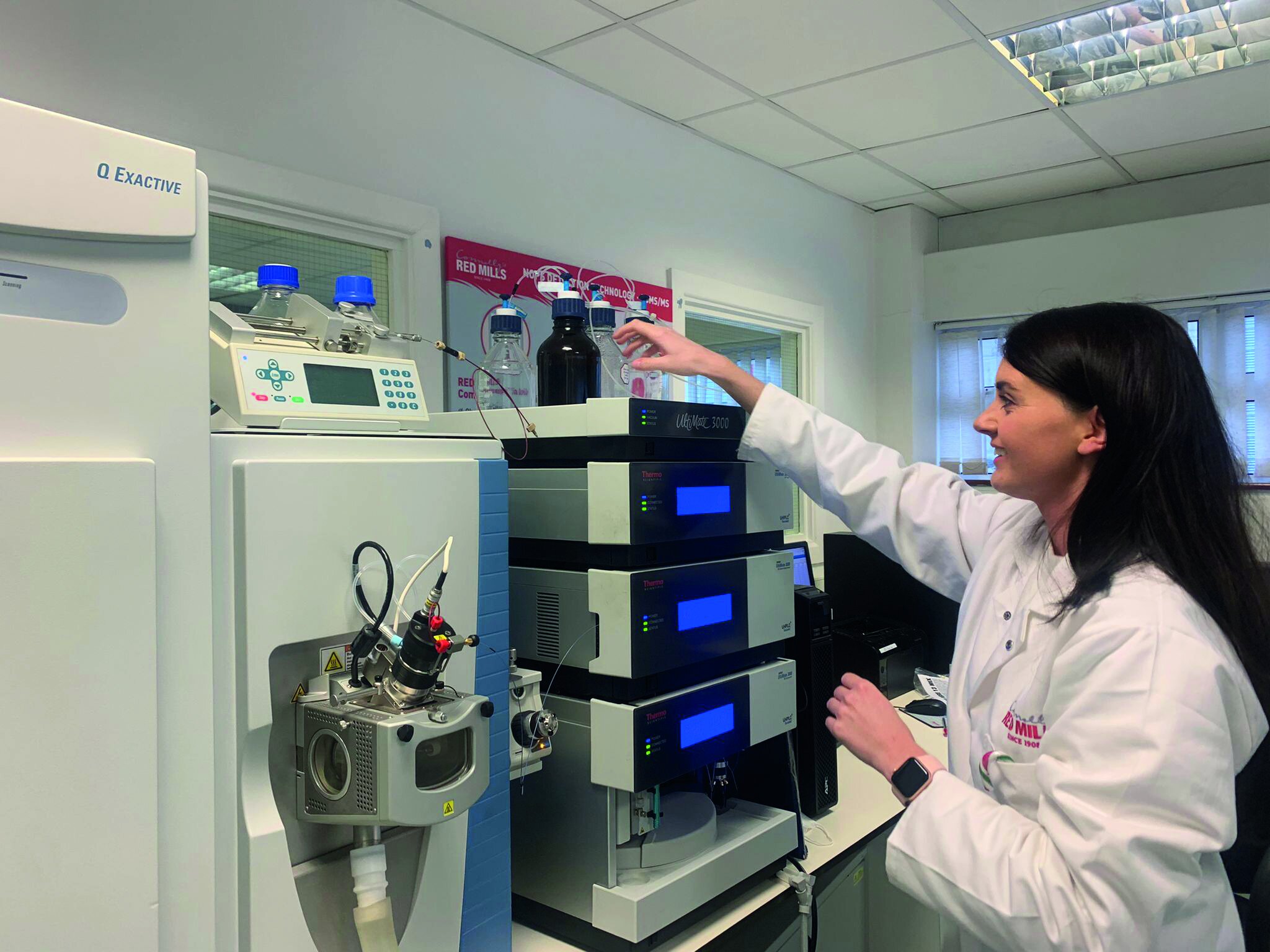How to choose the most effective supplements to support your horse
Good horse people want to do the right thing for the horses in their care. They want to help them perform to the best of their ability, and they want to help them to do that consistently, throughout the racing or competition season. Nutrition is a vital part of that. Every season, stables are presented with a long list of supplements, and every rep says theirs is the best. How do you know if you need to spend money on supplements, at all? If you conclude that you do, how do you sort the wheat from the chaff and pick the best one?
There are, essentially, only three reasons to feed a supplement:
To improve the balance of the daily ration,
To fill the gap between good daily nutrition and the increased requirements of horses under stress, and
To address specific health concerns.
Daily Ration Balance
First, remember that horses’ guts have adapted to digest roughage, and they need it. Hay (or grass, if you are lucky enough to have it) is the basis of a good daily ration.
You only need to feed a concentrated feed (the stuff you buy in a bag, like a Racehorse or Stud Farm Mix) to meet the additional protein, energy, vitamin, and mineral requirements that horses in work, growing, or breeding have. If the concentrate feed you choose has been prepared by a major feed company, it will generally be balanced for those things already, and they will essentially meet the daily needs of horses, when fed with forage. If you are having to correct deficiencies of energy or protein in your daily feed, consider picking a better-balanced concentrate feed for your particular horses.
In some parts of the world, grass isn’t plentiful, so forage is generally fed in the form of hay or green feed. Depending on the type of hay you choose, calcium and phosphorus balance might have to be adjusted with a daily supplement. You should ask your nutritionist or veterinarian to help you to get that right. In general, though, grains are high in phosphorus and low in calcium. Lucerne (Alfalfa) is high in calcium, while grass hays are generally lower in it. Feeding a mixture of grass hay and Lucerne as the main part of your daily ration, will likely mean that calcium and phosphorus will be close to right in your total ration, including the right concentrated feed. As an added bonus, Lucerne is a very good source of cost-effective and bioavailable protein for horses.
If you don’t need to add other stuff to your daily ration, don’t. With a few exceptions, it’s money wasted. Adding individual nutrients can produce no results or disrupt the balance of a good feed and actually have negative results.
Exceptions to the Rule
If the daily ration has selenium provided in an inorganic form, such as sodium selenite or selenate, have your veterinarian check blood selenium. Some horses will absorb and use those forms of selenium well, and others might not. Selenium has a very narrow therapeutic range (the amount they need is only a little bit less than the amount that is toxic), so it’s dangerous to over-supplement. If some horses need more, pick a supplement that provides selenium in an organic form like selenomethionine or selenocysteine. Yeast-based selenium is mostly a mixture of the two.
In a hot climate, some additional table salt or a salt block will be needed. Every horse, even spelling ponies, need access to a salt block.
Stabled horses and those in the Middle East don’t always get much grass. If horses aren’t getting fresh, growing grass, vitamin C might be low. Although it is often included in prepared feeds, it can be unstable, especially in hot climates, and levels can quickly drop. You might consider supplementing with vitamin C when horses are under extra stress. Vitamin C and the B group vitamins are water soluble, and they are not stored in the body. As a result, it makes more sense to provide those in supplements, given only when horses are under extra stress and requirements are increased.
When horses are under the added stress of hard work, transport, racing, competition, high heat and humidity, or ill health, requirements for many nutrients are increased. Feeding a daily ration designed for horses in hard work will generally provide energy, protein, fat soluble vitamins, and mineral levels to meet their overall needs, but some nutrient requirements will be increased beyond that, just at the time horses are under stress. B vitamins, for instance, will be needed in doses between 20 and 200 times requirements during times of added stress. If they were fed doses at this level on a daily basis, much of the dose would pass out in the urine. That is money wasted. On days they are travelling, racing, or sick, they would need more, absorb it, and use it. That’s money well spent.
At the same time as horses are under extra stress and need more nutrients, they will often go off feed and drink less than usual. Supplements will certainly be helpful, at those times, to fill the gap between good daily nutrition and the amount of nutrients they are eating and drinking voluntarily.
When you need a supplement for times of increased stress, it’s really important to read labels carefully. Ask yourself, these questions:
Does it have the right stuff? Is it complete?
Is the balance right?
Are the forms of nutrients and the doses going to meet the requirements of your horses?
To help answer these questions, consider the following:
Completeness
Metabolism is complex, requiring a broad range of essential nutrients. You can’t just feed two or three of them and hope to support performance, recovery, health, and metabolism. A lot of one nutrient doesn’t make up for deficiencies in another. If you ran out of food in your house and tried to just live on a big bag of salt, you wouldn’t last long. It is, therefore, important to consider if the supplement you are evaluating is complete enough to meet the complex requirements of equine physiology.
Balance
The balance between nutrients is equally important. Some nutrients are required for the uptake and function of other nutrients. (These supportive and cooperative nutrients are called co-factors.) Too much or too little of one nutrient may result in deficiencies or toxicities of other nutrients. Imbalances, therefore, can have a negative impact on health, performance, and recovery. At a minimum, imbalances in a feed or supplement can cost you money and have no effect at all.
For example, vitamin C is required for the absorption of iron from the gut. Without it, iron passes straight through the gut and out in the manure. Vitamin E binds with iron and reduces its absorption, causing much of it to be wasted. So, for horses to use dietary iron effectively, it has to be given with Vitamin C and without Vitamin E.
Bioavailability
Bioavailability refers to how well nutrients are absorbed and used. While this is partly related to the composition and balance of nutrients in a product, this is also about the form each nutrient is provided in. Some forms are more easily absorbed and used by the body than others.
The trace element chromium, for example, exists in several different forms. The form of chromium found in a chrome bumper on a car is, as you can imagine, not very digestible at all. The more organic forms like chromium picolinate (for people) or those incorporated into yeasts (a form often found in daily feed supplements for horses) is very easily absorbed and then used by cells. Minerals including calcium, magnesium, iron, cobalt, copper, zinc, selenium, and manganese can all be provided in a variety of forms, each of which have differences in their bioavailability.
In general, inorganic forms of nutrients are less well used than organic forms, though that is not always a reliable rule. Zinc oxide is one of the more bioavailable forms of zinc, whereas zinc chelate forms a big molecule that can be too big to be well absorbed. In most cases, though, minerals provided as gluconates, lactates, and amino acid or protein complexes are well used.
When reading labels, you should note whether the amount of the ingredient or the amount of the active nutrient is listed. For instance, Iron Bioplex, in which iron is bound to amino acids, contains only about 10% iron. If a label says a product contains 400mg of iron per dose, that means that a dose contains about 4000mg of Iron Bioplex yielding 400mg of very well absorbed and used iron. If the label says a product contains 400mg of Iron Bioplex per dose, then it really only has 40mg of actual iron. Make sure that you check those details carefully when reading labels and comparing products.
Doses and Nutrient Requirements
Do the doses of nutrients meet science-backed nutrient requirements? Caution! This might require math before you can measure a supplement against published nutrient requirements.
Labels will include the quantity of each nutrient, but those might be listed per kilogram or per dose. They might be in milligrams (mg), grams (g), or kilograms (kg), pounds (lb), ounces (oz), parts per million (ppm), percentages, or in some cases, a combination of units. All of these must be converted to the same units as the published nutrient requirements, and all have to be calculated per dose. It sounds seriously confusing, and it can be, but it’s also vitally important. If math isn’t your thing, ask a nutritionist for help. You can look up “NRC requirements” yourself or ask your nutritionist or veterinarian for help with this, too. Many feed companies have in-house nutritionists, and this can be a good way to get help, for a minimal charge or even for free, if you don’t have your own nutritionist.
Here's a tip to help make things easier:
If labels are easy to understand, and you can tell, at a glance, what you are feeding your horse in a single dose, then the manufacturer probably believes their formulation will stand up to scrutiny. If you have to perform too many calculations to figure out what you are giving, there’s a fair chance that the formulation isn’t great.
In any case, take the time to do the math and make sure you are comparing apples to apples before picking a supplement to spend your money on.
Addressing Specific Conditions or Concerns
Once the ration is properly balanced and nutritional requirements are being met effectively, you might also wish to feed supplements designed to address specific health issues. Nutraceuticals fed for healthy joints and tendons, or as digestive aids are common examples, and nutritional elements (vitamins, minerals, and amino acids) are also marketed for specific concerns. For example, vitamin K1 may support the development of strong cannon bones; biotin is fed to horses on high grain diets to support healthy hooves; chromium is fed to support muscle cells; and a variety of nutrients are fed to relax highly strung horses or to support red blood cell production in anaemic horses.
If you are looking at extra supplements like these, there are a few important questions to ask.
What scientific evidence is there that these products are likely to be effective?
Are the doses provided the same as the doses that produced good results in studies?
If nutritional elements are to be fed, do the amounts meet NRC requirements and are the cofactors needed for their absorption and effect also provided?
What quality, safety, and security assurance does the manufacturer provide?
Quality, Safety, and Security
How do you know if the product you are looking at contains what is says it does; only a fraction of what it says it has; or way more than it is supposed to have? Even more alarmingly, how do you know it doesn’t contain contaminants that aren’t supposed to be there?
There was an interesting study presented at an American Associate of Equine Practitioners (AAEP) meeting several years ago, in which several nutraceuticals were tested and their actual contents were compared with label claims. Those products were found to contain anywhere between 10 and 200% of the active ingredients that they were supposed to have. That is potentially a huge problem! If a product has too little of an ingredient, it may not be effective and will be a waste of money, but if it has a lot more than it is supposed to have, it may make horses sick or return a positive drug test result. We have already talked about how only a little too much selenium can be toxic, but for some nutrients like cobalt, an essential trace-mineral, feeding too much will produce a positive drug test. Contamination of feed supplements with Naturally Occurring Prohibited Substances, like caffeine, can also produce a positive test.
So, how do you know if a product is manufactured safely and meets its label claims?
This information isn’t generally on the label, but it can be just as important as the label itself. To get it, you either have to know the company management personally and have confidence in their diligence and ethics; you might have to talk to the manufacturer and ask questions; you can look at their website to find a statement about quality management; or you can look for third-party certification of their quality management practices. GMP or ISO certification are good ones to watch for. If a company has either ISO or GMP certification, you can be sure that the supplements they produce will be safe, secure, and generally meet label claims.
If a manufacturer lacks certification, it doesn’t mean they aren’t doing a fabulous job of quality management. They might have a written statement about their commitment to quality management or you might have to ask some questions to be sure. If at least some proportion of finished product undergoes analysis for common contaminants, the concentration of active ingredients, and microbial testing, it will likely be safe. If no testing is done, and the company doesn’t talk about product quality, safety, and security, you should be concerned.
Tip: Be sure to ask every rep that visits your stable about quality management as they will almost certainly be the most readily available source for this information. That is also a simple way to separate the wheat from the chaff. Any rep that can’t talk competently about their company’s quality management program, probably represents a company that doesn’t have one.
Feeding supplements can be necessary for adequately supporting horses, particularly during times of hard training, racing, competition, transport, illness, or stress. It is your responsibility to ensure the supplements you are feeding are necessary, complete, balanced, bioavailable, effective, and safe for health and drug testing. Get good value for money by avoiding under or over-supplementing. Hopefully I have helped you to make good choices, but remember, if in doubt – seek further advice from an equine nutritionist, veterinarian, or feed manufacturer.
Equine Nutrition - be wary of false feeding economies
Article by Louise Jones
Many horses, especially performance horses, breeding stallions, and broodmares at certain stages of production, require additional calories in the form of hard feed. Whilst in the current economic climate, with rising costs and inflation, it might be tempting to look at lower cost feeding options; in reality, this could be a false economy. When choosing a feed, in order to ensure that you are getting the best value for money and are providing your horses with the essential nutrients they require, there are a number of factors to consider.
Quality
The ingredients included in feed are referred to as the raw materials. These are usually listed on the feed bag or label in descending order by weight. Usually they are listed by name (e.g., oats, barley wheat) but in some cases are listed by category (e.g., cereals). Each raw material will be included for a specific nutritional purpose. For example, full-fat soya is a high-quality source of protein, whilst cereals such as oats are mainly included for their energy content, also contributing towards protein, fibre and to a lesser degree, fat intake.
Waste by-products from human food processing are sometimes used in the manufacture of horse feed. Whilst it is true that they do still hold a nutritional value, in most cases they are predominantly providing fibre but contain poor levels of other essential nutrients. Two of the most commonly used by-products are oatfeed and distillers grains. Oatfeed is the fibrous husks and outer layer of the oat and it mainly provides fibre. Distillers grains are what is left over after yeast fermentation of cereal grains used to produce alcohol. The leftover grain is dried and used in the feed industry as a protein source. Distillers grains can be high in mycotoxins, which are toxic chemicals produced by fungi in certain crops, including maize. Furthermore, despite being used as a protein source, distillers grains are typically low in lysine. As one of the first limiting amino acids, lysine is a very important part of the horse’s diet; horses in work, pregnant mares and youngstock all have increased lysine requirements.
Another ingredient to look out for on the back of your bag of feed is nutritionally improved straw, often referred to as “NIS”. This is straw that has been treated with chemicals such as sodium hydroxide (caustic soda) to break down the structural fibre (lignins) and increase its digestibility. Straw is a good example of a forage which contains filler fibre; in fact, you can think of it as the horse’s equivalent of humans eating celery. Traditionally, oat straw was used to make NIS, however many manufacturers now use cheaper wheat or barley straw due to the rising cost of good quality oat straw. Not all companies state what straw is used and instead use generic terms such as cereal straw, which again, allows them to vary the ingredients used depending on cost and availability.
By law, feed manufacturers must declare certain nutrients on the feed bag, one of which is the percentage crude protein. This tells you how much protein the feed contains. However, not all protein is created equal; some protein is of very high quality, whilst other proteins can be so low in quality that they will limit a horse’s ability to grow, reproduce, perform or build muscle. Protein ‘quality’ is often measured by the levels of essential amino acids (e.g., lysine, methionine) it contains. In most cases feed manufacturers do not have to list the amount of these essential amino acids; but looking at the ingredient list will give you a clue as to how good the protein quality is. Good sources of high-quality protein include legumes and soybean meal, whereas by-products often contain moderate- or low-quality protein, even though they may be relatively high in crude protein.
Understanding more about the ingredients in your bag of horse feed will help you to assess whether they are providing good, quality nutrition. Feeds containing large proportions of lower quality ingredients will obviously be cheaper, but this could compromise quality of the products. The goal therefore is to ensure that the nutritional makeup of the products remains high quality and consistent.
Cooking for digestibility
Digestibility is a term used to describe the amount of nutrients that are actually absorbed by a horse and are therefore available for growth, reproduction, and performance. Understanding digestibility of energy sources—such as fibre, fat, starch, and sugar as well as protein, vitamin and mineral digestibility—is important when devising optimal diets for horses.
Most of the energy in grains is contained in the starch; however, horses cannot fully digest starch from uncooked (raw) grains in the small intestine, which results in this undigested starch traveling into the hindgut where it will ferment and potentially cause hindgut acidosis. Therefore, in order to maximise pre-caecal digestibility, feed manufacturers cook the grain. Similarly, soya beans must be carefully processed prior to feeding them to horses. This is because raw soybeans contain a specific enzyme that blocks the action of trypsin, an enzyme needed for protein absorption.
There are various methods of cooking including pelleting, micronizing, extrusion, and steam-flaking. This is a fine art as, for example, undercooking soya beans will not deactivate the enzymes correctly, thus resulting in reduced protein absorption. On the other hand, overcooking will destroy essential amino acids such as lysine, methionine, threonine, and possibly others.
Variation in cooking methods, and hence digestibility, can have a direct impact on how the finished product performs. Your individual feed manufacturer should be able to tell you more about the cooking processes they use to maximise digestibility.
Micronutrient and functional ingredients specification
The back of your bag of feed should list the inclusion of vitamins, such as vitamin E, and minerals including copper and zinc. A lower vitamin and mineral specification is one way feed companies can keep the cost of their products down. For example, the vitamin E level in one unbranded Stud Cube is just 200 iu/kg—50% lower than in a branded alternative.
For most vitamins and minerals, the levels declared on the back of the bag/label only tell the amount actually added and do not include any background levels provided by the raw materials. In other marketing materials, such as brochures, some companies will combine the added figure with the amount provided by other raw materials in order to elevate the overall figure. For example, a feed with 50 mg/kg of added copper may list the total copper as 60 mg/kg on their website or brochure. Whilst it is perfectly acceptable to do this, it is equally important to recognise that background levels in different raw materials can vary and hence should not be relied upon to meet requirements. To complicate this slightly further, chelated minerals (e.g., cupric chelate of amino acids hydrate, a copper chelate) may be included. Chelated minerals have a higher bioavailability, and so a feed with a high inclusion of chelated copper may perform as well as one that has an even higher overall copper level but does not include any chelates.
Equally important is the need to verify that any specific functional ingredients such as prebiotics or yeast are included at levels that are likely to be efficacious.
Feeding rates
Whilst the cost of a bag of feed is undeniably important, another aspect that should be considered is the amount of feed required to achieve the desired body condition and provide a balanced diet. Feeding higher volumes of hard feed not only presents a challenge from a gastrointestinal health point of view but also increases the cost per day of feeding an individual. For example, the daily cost of feeding 8kg of a feed costing £400/€460 per tonne vs 5¼ kg of a feed costing £600/€680 per tonne are exactly the same. Plus, the lower feeding rate of the more expensive product will be a better option in terms of the horse’s digestive health, which is linked to overall health and performance. To keep feeding costs in perspective, look at the cost of feeding a horse per day rather than relying on individual product prices.
Consistency
When a nutritionist creates a recipe for a horse feed, they can either create a ‘set recipe’ for the feed or a ‘least cost formulation’. A set recipe is one that doesn’t change and will use exactly the same ingredients in the same quantities. The benefit of this is that you can rest assured that each bag will deliver the same nutritional profile as the next. However, the downside is that if the price of a specific ingredient increases, unfortunately, so will the cost of the product.
On the other hand, least-cost formulations use software to make short-term recipes based on the cost of available ingredients. It will use the cheapest ingredient available. When done correctly, they will provide the amount of calories (energy), crude protein, vitamins and minerals as specified on the label. However, the ingredients will change, and protein quality can be compromised. Often feed companies using least-cost formulations will print their ingredients on a label, rather than the bag itself, as the label can be amended quickly and cheaply, should they alter the recipe.
Checking the list of ingredients in your feed regularly should alert you to any formulation changes. Equally look out for feeds that include vague ingredient listings such as ‘cereal grains and grain by-products, vegetable protein meals and vegetable oil’; these terms are often used to give the flexibility to change the ingredients depending on how costly they are.
Peace of mind
Another important issue is that some companies producing lower-cost feeds may not have invested in the resources required to carry out testing for naturally occurring prohibited substances (NOPS) such as theophylline, banned substances (e.g., zilpaterol - an anabolic steroid) or mycotoxins (e.g., zearalenone). It is true that, even with the most stringent testing regime, identifying potential contamination is difficult; and over recent years, a number of feed companies have had issues. However, by choosing a feed manufacturer who is at the top of their game in terms of testing and monitoring for the presence of such substances will give you peace of mind that they are aware of the threat these substances pose, and they are taking significant precautions to prevent their presence in their products. It is important to source horse feed from a BETA NOPS registered feed manufacturer at a minimum. It may also be prudent to ask questions about the feed manufacturer’s testing regime and frequency of testing.
Supplements – to use or not to use?
A good nutritionist will be able to assess any supplements that are fed, making note of why each is added to the diet and the key nutrients they provide. It is easy to get stuck into the trap of feeding multiple supplements that contain the same nutrients, effectively doubling up on intake. Whilst in many cases this isn’t nutritionally an issue, it is an ineffective financial spend. For example, B vitamins can be a very useful addition to the diet, but if provided in levels much higher than the horse needs, they will simply be excreted in the urine. Reviewing the supplements you are feeding with your nutritionist to ensure they are essential and eliminating nutritional double-ups is one of the simplest ways to shave off some expense.
Review and revise
A periodic review of your horse’s diet ensures that you’re providing the best nutrition in the most cost-effective way. This will require the expertise of a nutritionist. Seeking advice on online forums and social media is not recommended as this can lead to misinformed, biased advice or frankly, dangerous recommendations. On the other hand, a properly qualified and experienced nutritionist will be able to undertake a thorough diet evaluation, carefully collecting information about forages, concentrates, and supplements.
Working with a nutritionist has many advantages; they will be able to work with you to ensure optimal nutrition, whilst also helping to limit needless expenses. Some nutritionists are better than others, so choose wisely. (Does the person in question have the level of qualifications?) Bear in mind that while qualifications can assure you that the nutritionist has rigorous science-based training, experience is also exceptionally important. Ask them about their industry experience and what other clients they work with to ensure they have the right skill set for your needs. In addition, a competent nutritionist will be willing and able to interact with your vet where and when required to ensure that the health, well-being, and nutrition of your horses is as good as it can be.
There are independent nutritionists available, but you will likely incur a charge—often quite a significant one. On the other hand, the majority of feed companies employ qualified, experienced nutritionists and offer their advice, free of charge.

